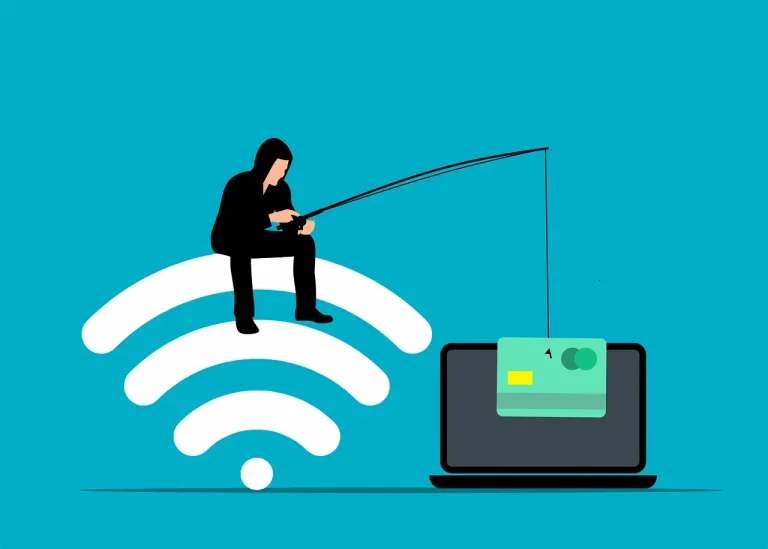Phishing emails lurk in your inbox, waiting to steal your information. Learn how to identify these deceptive messages and protect yourself from falling victim to a phishing scam. Read our expert guide for a safer inbox!
Beware the Bait! Understanding Email Phishing and Guarding Your Inbox
Ever receive an email that seems too good to be true, like a sudden inheritance from a long-lost relative or a “once-in-a-lifetime” discount from a popular store? These could be phishing attempts – deceptive emails designed to steal your personal information or trick you into clicking malicious links.
Phishing scams are a prevalent threat in today’s digital world. This blog delves into the world of email phishing, exploring:
- What phishing is and how it works: Uncover the tactics scammers use to lure victims into their traps.
- The different types of phishing emails: Learn to recognize the various forms these scams can take.
- How to identify and avoid phishing attempts: Equip yourself with crucial knowledge to protect your data.
- Best practices for email security: Discover essential habits for a safer inbox.
By understanding email phishing and implementing these tips, you can significantly reduce your risk of falling victim to a scam and safeguard your personal information.
The Phishing Plot: How Scammers Reel You In
Phishing scams rely on social engineering – the art of manipulating people into revealing sensitive information or taking actions that benefit the scammer. Here’s how a typical phishing attempt unfolds:
- The Lure: The scammer sends an email that appears to be from a legitimate source, such as your bank, credit card company, a popular online service, or even a friend or colleague.
- The Message: The email content can vary. It might be a fake notification about suspicious activity on your account, an urgent request to update your personal information, or a tempting offer that seems too good to miss. The goal is to create a sense of urgency or fear to pressure you into acting impulsively.
- The Hook: The email typically includes a call to action, urging you to click on a malicious link or download an attachment. These links can lead to fake websites designed to steal your login credentials, credit card information, or other sensitive data. Attachments might contain malware that infects your device upon download.
If you fall victim to the scam and click the link or open the attachment, you could experience a range of consequences, including:
- Identity Theft: Phishing emails often aim to steal usernames, passwords, and other personal information that can be used for identity theft.
- Financial Loss: Scammers may use stolen information to access your bank accounts or credit cards and make unauthorized transactions.
- Malware Infection: Emails with malicious attachments can infect your device with malware, such as viruses or spyware, compromising your data and system security.
A Gallery of Guises: Recognizing Different Phishing Attempts
Phishing emails can come in many forms. Here are some common types to be aware of:
- Spoofed Emails: These emails appear to be from a trusted source, like your bank or a popular online service. Scammers often use clever techniques to mimic logos and email addresses, making them appear legitimate.
- Urgent Alerts: These emails create a sense of urgency by claiming suspicious activity on your account or threatening account suspension if you don’t take immediate action.
- Tax Scams: Phishing emails claiming to be from the IRS or other tax authorities are common. They may threaten penalties or offer fake refunds to lure victims into clicking malicious links.
- Gift Card Scams: Emails offering free gift cards or claiming you’ve won a prize can be phishing attempts. These emails often urge you to click a link or provide personal information to claim your “reward.”
- Friend/Colleague Impersonation: Scammers may impersonate someone you know, like a friend, colleague, or family member, in an attempt to gain your trust and trick you into clicking a link or sharing information.
Remember, scammers are constantly evolving their tactics. Staying vigilant and understanding common phishing techniques is crucial for protecting yourself.
Casting Away the Bait: Essential Tips to Avoid Phishing Scams
Don’t let yourself get hooked by a phishing scam! Here are some essential tips to help you identify and avoid these deceptive emails:
- Scrutinize the Sender Address: Be wary of emails from unknown senders or addresses that don’t match the sender’s displayed name. Legitimate companies will typically use email addresses that clearly identify their organization (e.g., [email address removed]).
- Hover Over Links, Don’t Click: Before clicking on any link within an email, hover your mouse over the link to see the actual destination URL in the bottom left corner of your browser window. If the URL appears suspicious or doesn’t match the displayed text in the link, don’t click on it.
- Beware of Generic Greetings: Legitimate companies will often address you by name. Generic greetings like “Dear Customer” or “Dear User” can be a red flag for a phishing email.
- Watch for Grammatical Errors and Misspellings: Professional companies typically proofread their emails carefully. Emails with grammatical errors, typos, or unusual phrasing can be signs of a scam.
- Don’t Share Personal Information Through Email: Legitimate companies will not request sensitive information like passwords or credit card details via email. If you receive an email asking for such information, don’t respond. Contact the company directly through their official website or phone number to verify its authenticity.
- Verify Before Downloading Attachments: Never download attachments from suspicious emails. If you’re unsure about the legitimacy of an attachment, contact the sender directly through a verified channel to confirm.
- Be Wary of Urgent Requests: Phishing emails often create a sense of urgency to pressure you into acting impulsively. If an email seems urgent, take a step back and verify its authenticity before taking any action.
- Strengthen Your Passwords: Use strong, unique passwords for all your online accounts. Avoid using the same password for multiple accounts. Consider using a password manager to help you create and manage strong passwords.
- Enable Two-Factor Authentication: Many online services offer two-factor authentication (2FA) as an extra layer of security. 2FA requires a second verification step, such as a code sent to your phone, in addition to your password when logging in. Enable 2FA for all accounts that offer it.
- Keep Your Software Up-to-Date: Outdated software can contain vulnerabilities that scammers can exploit. Ensure your operating system, web browser, and other software are updated with the latest security patches.
- Report Phishing Attempts: If you receive a phishing email, report it to the sender’s email provider and to your own email provider. This helps them track and block phishing attempts.
By following these tips and developing a cautious approach to emails, you can significantly reduce your risk of falling victim to a phishing scam.
Building a Fortress: Best Practices for Email Security
In addition to the tips above, adopting these best practices can further enhance your email security:
- Use a Separate Email Address for Online Accounts: Consider having a separate email address specifically for online shopping, social media, and other non-critical accounts. This helps keep your personal email address less exposed to potential phishing attempts.
- Be Wary of Public Wi-Fi: Avoid accessing sensitive information like bank accounts or online shopping sites when using public Wi-Fi networks. Public Wi-Fi can be less secure, making you more vulnerable to phishing scams.
- Beware of Social Media Scams: Phishing attempts can also occur through social media messages. Be cautious of unsolicited messages, links, or attachments, even from seemingly familiar accounts.
- Educate Yourself and Others: Stay informed about the latest phishing scams and tactics. Share this knowledge with friends and family to help them protect themselves as well.
Conclusion: Guarding Your Inbox, Protecting Yourself
Email phishing scams are a constant threat in today’s digital world. However, by understanding the tactics scammers use, adopting a cautious approach to emails, and implementing these essential tips, you can significantly reduce your risk of falling victim to a scam. Remember, vigilance and a healthy dose of skepticism are your best defenses against phishing attempts.
Looking for more information on online security? Check out our blog on “Creating a Digital Defense: Essential Tips for Online Security and Privacy” for a comprehensive guide on protecting yourself in the digital world.
By safeguarding your inbox, you’re taking a crucial step towards protecting your personal information, your finances, and your overall online security. So, stay informed, stay vigilant, and enjoy a safer email experience!


